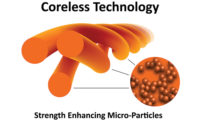Medical insights on hand injuries
Gloves mitigate the risks of crushes, pinching, blows & burns

A safety manager’s job is never done as you constantly strive to create and improve your safety culture and promote an injury prevention mindset. You already know that the best way to avoid injuries is through thorough safety assessments, training that engages your workers, regular reminders, and quality PPE as a last line of defense including impact, cut, heat, and puncture-resistant gloves.
At the same time, it’s an unfortunate truth of human nature that workers think an accident will happen to the other guy. And while scare tactics are rarely effective, a practical review of injuries, recovery time, and long-term prognoses may help workers think twice in a dangerous environment.
We sat down with Dr. Joshua Alpert, an orthopedic surgeon at Midwest Bone & Joint Institute in the northwest suburbs of Chicago, to talk about the ins and outs of hand injuries. He helped us to understand why hand injuries can be particularly serious and what recovery from an injury looks like.
Why are injuries to the hand so serious?
Particularly for industrial workers, you’re using your hand in order to do fine motor skills – repetitive activities, basic functions. A hand injury is debilitating not just for work, but for living.
Is the hand more delicate than other body parts?
Hand and finger joints are very small. When there is an injury to the hand and fingers and it swells up, it’s not like knees or shoulders, which are big joints. When you have swelling in soft tissue, it can take four to six months to come down and it impairs your range of motion.
It’s also common to see a hand injury that involves a burn. If you have a burn to the knee or shoulder, again you may have some decreased sensation and you can live with that. But if you lose sensation in your hand, it can lead to further injury because you don’t have sensitivity to heat or cold.
In general, are some types of hand injuries more serious than others? Which are the most serious?
The most serious injuries we see are hand crush injuries resulting from someone’s hand getting crushed or caught in a machine. People sometimes have to have fingers amputated. They have open fractures with bones sticking out. Those are hand emergencies that we treat surgically as soon as possible to salvage the hand or finger. Other serious hand injuries we see are dislocated fingers.
What’s the most common injury you see?
Injuries to the tips of the fingers. That’s where all your tactile sensation is so you really want to make sure that’s intact. The most common amputations we see are at the tips of the fingers because that’s the area you’re using the most. Usually, you’re not going to have your entire hand get crushed. It’s the tips that get put in a spot they’re not supposed to be in.
Let’s talk about particular injuries and what it takes to repair them.
Crushes
The severity of a crush injury depends on the type of damage. If the crush includes a bone injury with missing skin or has a bone sticking out, it’s a three month recovery. If the damage includes tendon, bone, and nerve, it’s a four- to six-month recovery.
What’s involved in fixing that?
If a bone is broken, you have to put a pin in to fix it. Sometimes the bone is so smashed, we have to cut the bone away, do an amputation, and close the skin around it. If there’s an open wound, we may have to wash it out and repair soft tissues.
Pinches
Pinches are really soft tissue crushes. If no bone is broken, it takes about four to six weeks for the pain and swelling to go down and for function to come back -- and it’s possible for the (impact on functioning) to be permanent. I don’t know that pinch is a medical term, (but it’s commonly used in the safety industry).
Lacerations
It all depends on how deep the laceration goes. If it’s superficial, they can close it up in the emergency room. Most superficial lacerations take two to three weeks to fully heal and get back to work full duty. If it’s deeper and includes muscle, tendon and bone, recovery can be three to four months. In these more severe cases, you can lose functioning of the hand. You can lose strength. A variety of things can happen.
Blows to the hand
These injuries are very similar to crush. A crush injury affects both sides of the hand. A blow would usually be on just one side so the injury may not be as severe as a crush.
Abrasions
A typical abrasion takes about ten to fifteen days to heal. A more severe abrasion is almost like a burn. You may have to do a skin graft to get it to heal so you may need a plastic surgeon, these are much more extensive and can take four to six weeks to heal.
Burns
Burns are usually treated by a plastic surgeon and of course there are different degrees of severity – first degree, second degree, third degree that most people are familiar with. Less severe burns usually only require dressing changes. If the burn goes down to the tendon, you’re looking at skin grafts. Depending on the severity of the burn, recovery can take between four weeks and six months.
Do you have any advice for safety managers and their workers?
I think the biggest thing is to make sure they have proper knowledge and training on the machines they’re using. Go through safety training and follow safety training rules. Injured workers come in to us who weren’t trained properly on their machine or who were not following proper protocol. It’s important to follow the rules that are set up.
Particularly when you’re talking about the risk of crushes or pinches, the kind and quality of the gloves you wear matter. A quality glove really can protect you from a crush or burn injury. If it’s a serious enough incident, the right glove can mean the difference between a less severe soft tissue injury and a serious crush injury.
Looking for a reprint of this article?
From high-res PDFs to custom plaques, order your copy today!





